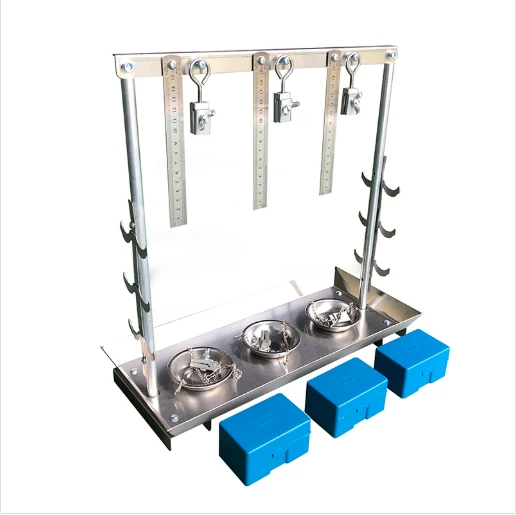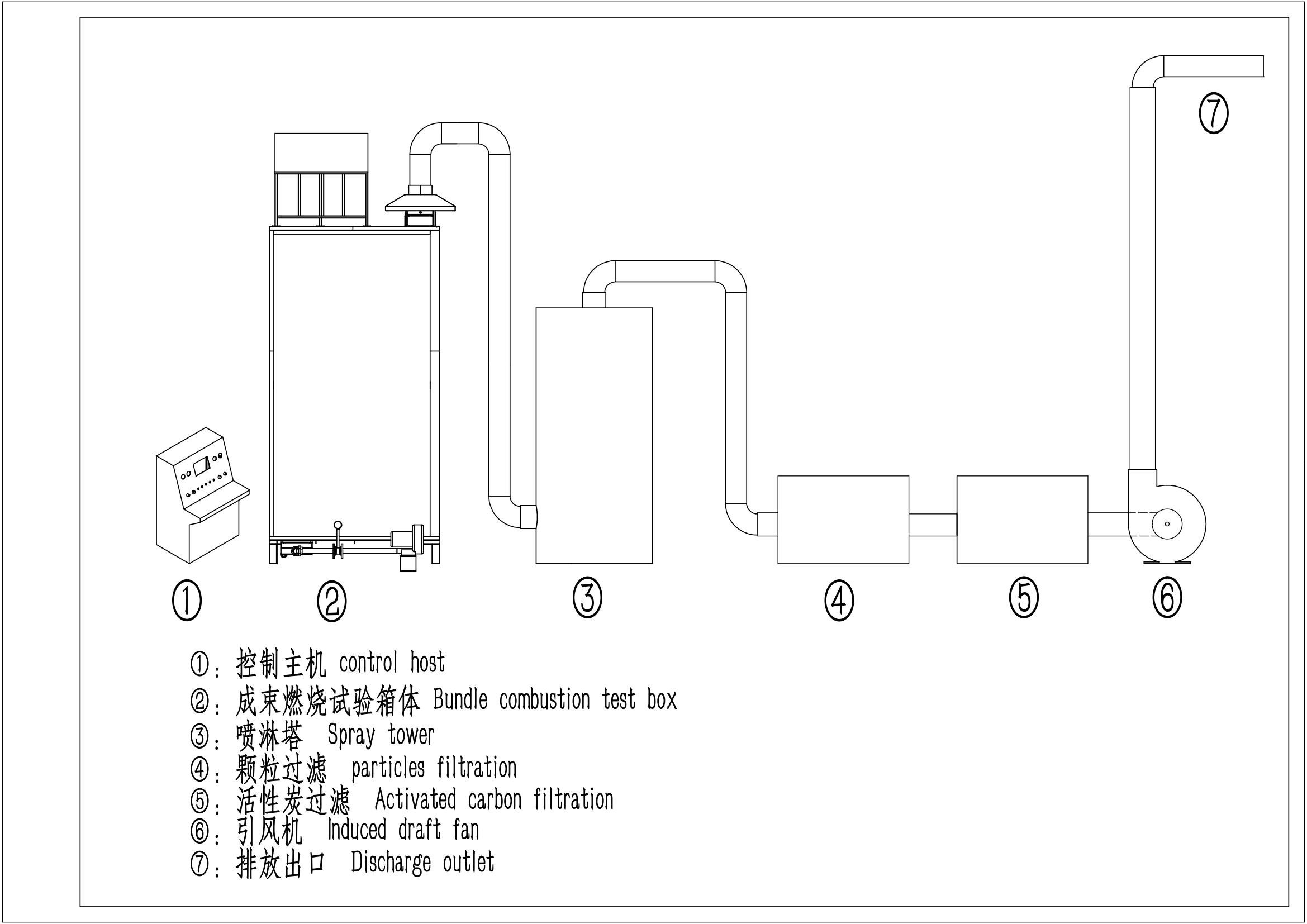Precise, Durable & Automated Wire Bending Test Machine
- The Essential Role of Wire Bending Test Machines in Modern Industry
- Critical Technical Specifications and Performance Metrics
- Comparative Analysis of Leading Global Manufacturers
- Customization Capabilities for Specialized Testing Requirements
- Material-Specific Applications Across Key Sectors
- Supplier Selection Criteria for Optimal Procurement Decisions
- Future Outlook: Emerging Trends in Wire Testing Technology

(wire bending test machine)
Understanding the Essential Role of Wire Bending Test Machines
Wire bending test machines serve as indispensable quality control instruments across aerospace, automotive, and construction sectors. These precision devices simulate repeated bending stress to evaluate ductility, fatigue resistance, and structural integrity of metallic wires and cables. According to ASTM E290 and ISO 7801 standards, such testing prevents catastrophic failures in critical applications like suspension bridge cables and medical implant components. Global demand grew 12.7% annually since 2020, driven by infrastructure investments and heightened safety regulations.
Critical Technical Specifications and Performance Metrics
Contemporary wire bending testers incorporate servo-motor controls achieving angular positioning accuracy within ±0.1°. Modern units feature:
- Variable bend angles from 0° to 360° with programmable rotation speed
- Load capacities ranging from 50N for micro-wires to 200kN for industrial cables
- Integrated optical measurement systems detecting fractures at 500fps
- Automatic data logging with cloud-based reporting compliance
Laboratory tests demonstrate next-generation machines maintain testing consistency through 10 million cycles with less than 2% variance in force application.
Comparative Analysis of Leading Global Manufacturers
| Manufacturer | Country | Max Load (kN) | Accuracy Class | Cycle Speed (rpm) | Testing Range |
|---|---|---|---|---|---|
| Tinius Olsen | USA | 50 | 0.5% | 90 | Ø0.1-30mm |
| ZwickRoell | Germany | 100 | 0.3% | 120 | Ø0.05-50mm |
| Shimadzu | Japan | 75 | 0.2% | 150 | Ø0.01-40mm |
| MTS Systems | USA | 200 | 0.4% | 80 | Ø1-100mm |
Note: ISO 17025 certified manufacturers offer superior calibration traceability
Customization Capabilities for Specialized Testing Requirements
Reputable manufacturers provide engineered solutions addressing unique industry challenges. For offshore wind farm cabling, a Dutch supplier developed waterproof testing chambers simulating saltwater immersion during bending cycles. Medical wire producers frequently request micro-scale fixtures accommodating diameters below 0.1mm with sterilization-compatible components. Aerospace clients increasingly demand cryogenic testing modules validating performance at -65°C. 78% of custom orders incorporate proprietary software algorithms predicting failure thresholds based on accumulated stress data.
Material-Specific Applications Across Key Sectors
Automotive: Spring wire testing involves 135° reverse bends at 25°C/minute temperature ramps, reducing warranty claims by 31%
Electronics: Bonding wire analysis requires 0.001N resolution to prevent micro-fractures in semiconductor packaging
Construction: Pre-stressed concrete reinforcement cables undergo 45° alternating bends at 8kN constant tension
Case Study: A Korean automotive supplier reduced wire harness failures by 47% after implementing programmed torsion-compensation protocols in their testing regimen
Supplier Selection Criteria for Optimal Procurement Decisions
Identifiable exporters must demonstrate ISO 9001:2015 certification with verifiable NIST traceability. Additional considerations:
- Local technical support within 48-hour response guarantee
- Availability of loaner units during calibration/maintenance cycles
- Standardized data output formats compatible with existing QMS
- Provision of certified reference materials for validation
EU-based manufacturers typically provide superior post-sales service but command 18-22% price premiums versus Asian exporters.
Future Outlook: Emerging Trends in Wire Testing Technology
Advancements in wire bending test machine
design increasingly incorporate AI-powered predictive analytics and IIoT connectivity. Sensors now monitor acoustic emissions during bending to detect microfractures before visible failure occurs. Major manufacturers are developing dual-mode machines combining bending and torsion testing in single platforms, reducing material handling by 60%. The global market for these integrated systems is projected to reach $870M by 2028, with leading exporters establishing regional manufacturing hubs to circumvent supply chain vulnerabilities exposed during recent global disruptions.

(wire bending test machine)
FAQS on wire bending test machine
Q: What is a wire bending test machine?
A: A wire bending test machine evaluates the flexibility and durability of wires by simulating repeated bending cycles. It helps ensure product quality in industries like automotive and electronics testing.
Q: How can I identify reliable wire bending test machine suppliers?
A: Look for suppliers with certifications (e.g., ISO) and positive customer reviews on platforms like Alibaba or industry forums. Reputable suppliers offer warranties and technical support for smooth procurement.
Q: What defines top wire bending test machine manufacturers?
A: Top manufacturers produce high-precision machines with custom designs that meet global standards. They focus on innovation, quality control, and after-sales services to maintain industry leadership.
Q: How do wire bending test machine exporters support global transactions?
A: Exporters handle shipping, customs, and documentation to ensure seamless international delivery. They collaborate with manufacturers to provide competitive pricing and adapt to diverse market requirements.
Q: What key features should I prioritize in a wire bending test machine purchase?
A: Prioritize adjustable bend angles, robust sensors, and user-friendly software. This ensures accurate, repeatable testing while complying with norms like ASTM for reliability.
-
The Role of Tensile Force Testers in Quality Control and Material Science
NewsAug.01,2025
-
Maintenance and Safety Tips for Aging Ovens
NewsAug.01,2025
-
Density Balance in Forensic Science
NewsAug.01,2025
-
Advanced Optical Measurement Technologies
NewsAug.01,2025
-
A Buyer’s Guide to Tensile Test Machines
NewsAug.01,2025
-
Why the Conductor Resistance Constant Temperature Measurement Machine Redefines Precision
NewsJun.20,2025
 Copyright © 2025 Hebei Fangyuan Instrument & Equipment Co.,Ltd. All Rights Reserved. Sitemap | Privacy Policy
Copyright © 2025 Hebei Fangyuan Instrument & Equipment Co.,Ltd. All Rights Reserved. Sitemap | Privacy Policy
